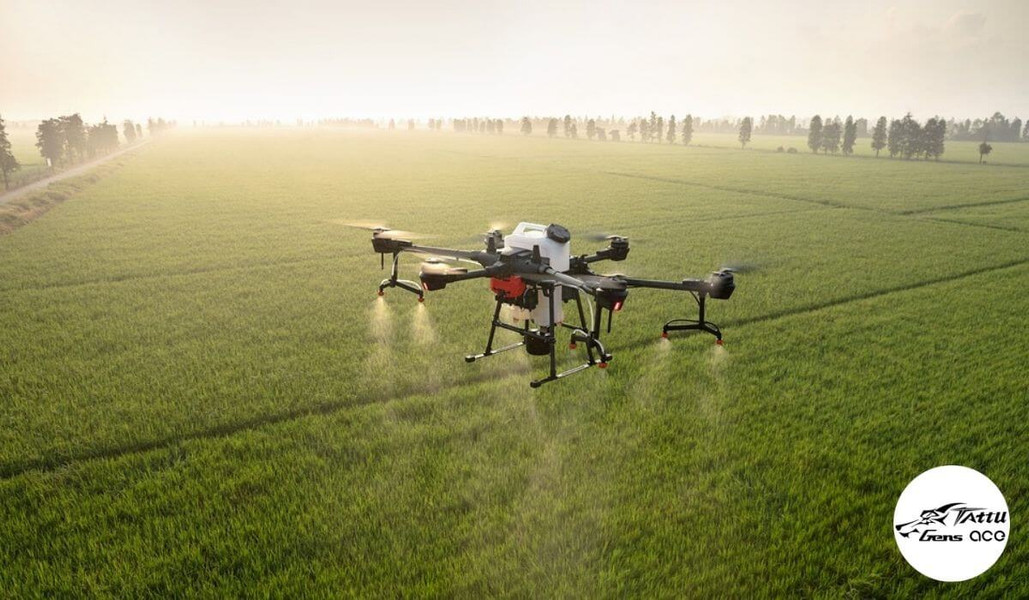How to use and maintain the agricultural spraying drone battery
Posted by Gensace Tattu on Mar 19th 2022
Lithium Polymer Batteries (LiPO) are commonly used in agricultural spraying/plant protection drones, which have a variety of obvious advantages such as high energy density, ultra-thinness, lightweight, as well as high safety and low cost. As a battery manufacturer who has been immersed in the drone industry for many years, we Grepow & Tattu Team will share with you the use and maintenance methods of the battery.
Common problems in the use of agricultural spraying drone batteries
1. Battery ingress of water or drugs.
Smart Lipo batteries configured with BMS are now chosen by most plant protection machines. This kind of battery should pay attention to waterproof, dustproof and anti-drug spraying, and try to choose a water resistant, well-designed battery pack with a protective shell, otherwise, it will cause the following hazards.
(1) The battery circuit board is infused with water or drugs, which will corrode the components and thus lead to poor functionality, such as wrong button display light, the light does not light up when charging and discharging, or the battery cannot be charged.
(2) The battery entering the pesticide will corrode the aluminum-plastic film of the cell and other battery materials, which will cause liquid leakage.
(3) Battery plug is corroded and oxidized, poor contact, the increase in voltage drop, reduce the flight time, also cause heating severely, long-term use may cause the battery short circuit, thus catching fire!
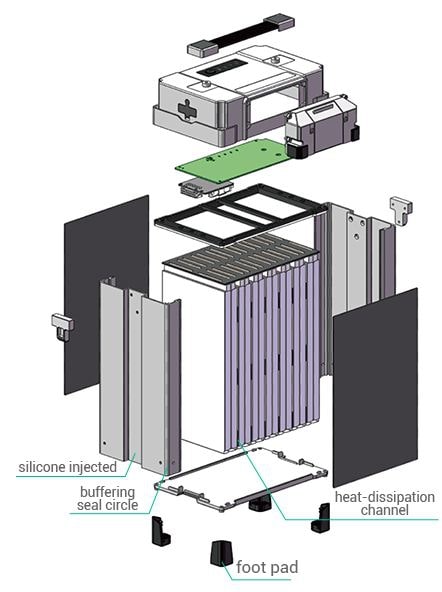
2. Battery over-discharge.
Battery overuse and long-term storage without maintenance are the two main factors that cause battery over-discharge, the damages are as follows.
(1) Battery permanent injury: large voltage gap after charging; slight bulge; shorten flight time; significantly decline lifespan, etc.
(2) battery failure or fire: the battery does not charge; fire, etc.
(3) The battery is exhausted and may cause the drone to crash.
3. Mixed battery.
The situation of battery mixing refers to the combination of the old and new, the different electricity levels of the battery, the hazards are: the battery performance decreases, the endurance is not enough; the service life is reduced, the battery is overdischarged.
To avoid mixing batteries, it should be noted that:
(1) Use batteries with the same number of strings/cells.
(2) Use a set of batteries powered by more cells directly to reduce the chance of mix-ups.
(3) Check the battery level before the flight to ensure the same level.
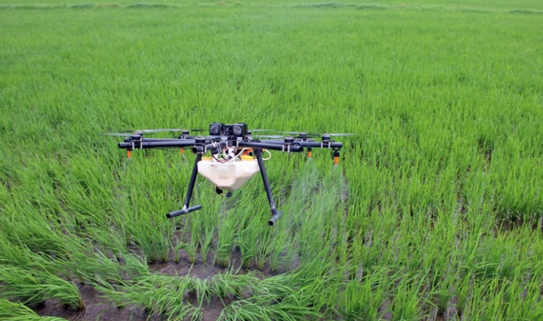
Attentions for the use of agricultural spraying drone battery
1. Keep away from agrochemicals to prevent the battery from being corroded.
2. Take it carefully to avoid damage to the battery.
(1) The battery pack falling or hitting will cause deformation of the cell, resulting in internal damage to the battery. Slightly, it will cause the shortening of the use or storage time; seriously, once the high current discharge, it is very likely to catch fire, which is extremely dangerous.
(2) It is recommended that users should be careful in the process of use or turnover, do not drop or hit.
3. Storage precautions
(1) Regular charge: the battery is not used for a long period of time, due to the self-discharge characteristics of the battery, in order to prevent the over-discharge damage, should be regularly checked and fill the battery, it is recommended that the battery storage voltage in 3.80 ~ 3.90V.
(2) Water and fire are strictly prohibited: Never put the battery into water or fire.
(3) Prohibited disassembly.
(4) Fireproof: Do not put the battery near an exposed flame or a heating source!
(5) Moisture-proof: Do not store the battery in a humid environment or in direct sunlight. Please ensure that the battery is stored in a dry room temperature place, the best temperature is 10~25℃.
Check the storage environment of the battery frequently, and it is best to charge and discharge the battery once every two months to maintain the stability of the battery.
The battery warehouse should always have fire extinguishing equipment, insulated gloves and fire pliers. If the battery smoke or fire is caused by the inadvertent operation, do not directly pour water, should promptly use a large amount of dry sand, fire extinguishers to extinguish. If you need to scrap the exhausted battery, please completely soak the battery in saltwater for more than 72 hours to ensure complete discharge before drying and disposal.
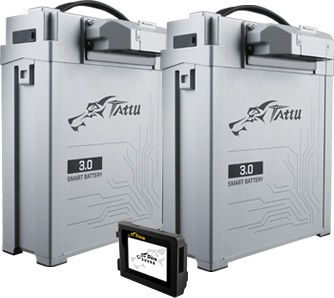
4. How to prevent battery over-discharge
(1) Correct use: During the flight, the battery is relatively smooth when it first starts to discharge, once it discharges to below 3.6V for each cell, the battery will drop faster. It is necessary to make full use of the flight alarm device, once alarmed, it should be landed as soon as possible; in addition, before the battery is to flight use, it is advisable to measure the voltage of each cell, to ensure that the battery pack voltage balance, to reduce the risk of over-discharge.
(2) Safe storage: When storing the battery for a long time, it is recommended that the ambient temperature be stored between 10~25℃, prohibiting storage in a humid, high temperature environment. The used battery should be recharged in time. Every two months to check the battery maintenance, storage single cell voltage should be between 3.8 ~ 3.90V.
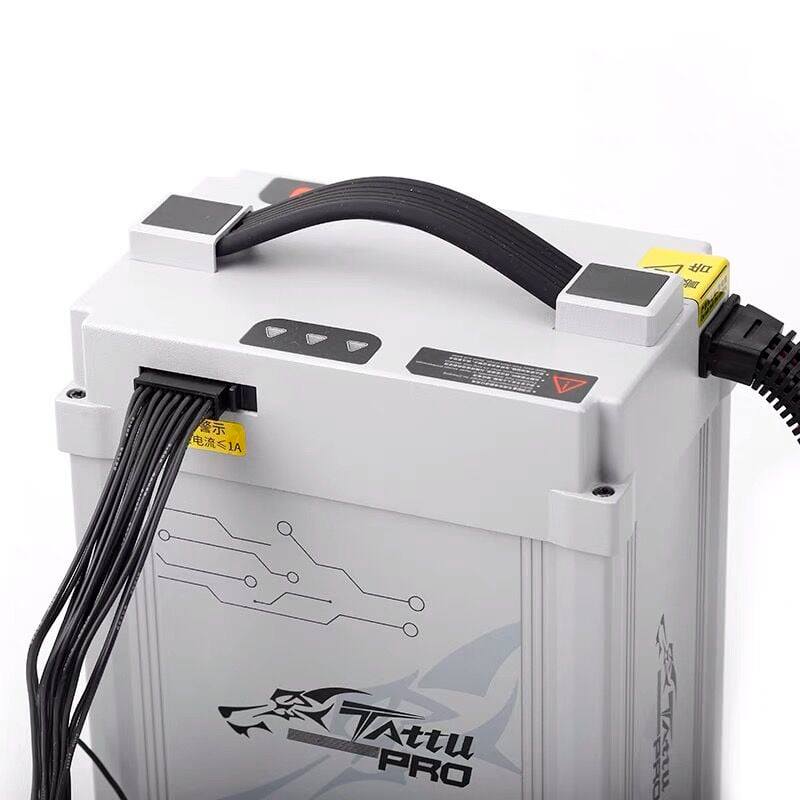
The correct use of agricultural spraying drone battery specification
1. Charging safety standard
(1) Use the special charger for charging the UAV battery.
(2) Check the voltage of individual cells before charging.
(3) Charge the battery according to the specified charge c rate.
(4) Do not charge in high or low temperature environments.
(5) Charge in a well-ventilated and open area.
(6) Prepare a bucket of sand for emergencies.
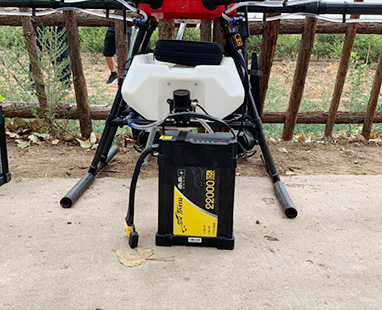
2. Discharge safety standard
Keep in mind: do not overdrive the drone battery power, when the voltage reaches 3.7V, return or land the drone as soon as possible!
The picture shows the voltage of the drone battery when it is discharged, which indicates that
(1) When the battery is discharging at the beginning, the voltage drops relatively quickly.
(2) The voltage drops slowly when the battery is discharged to between 3.9 and 3.7V.
(3) Once the voltage drops to 3.7V, the voltage drops faster.
3. Use standard: starting at low temperature
Batteries used in cold weather, the voltage will drop quickly, this is a normal phenomenon, it is recommended to use after warming.
(1) The temperature of the battery itself is kept above 5 ℃, 20 ℃ is the best.
(2) When the battery temperature does not reach 20℃ or above, it is not recommended to carry out high intensity mission flight tasks.
(3) Before takeoff, the battery should be kept in a warm environment (about 20℃), such as inside the house, car, thermal box, etc.; when taking off, install the battery quickly to the drone.
(4) When flying at low temperature, try to shorten the time to half that of the room temperature to ensure a safe flight.
T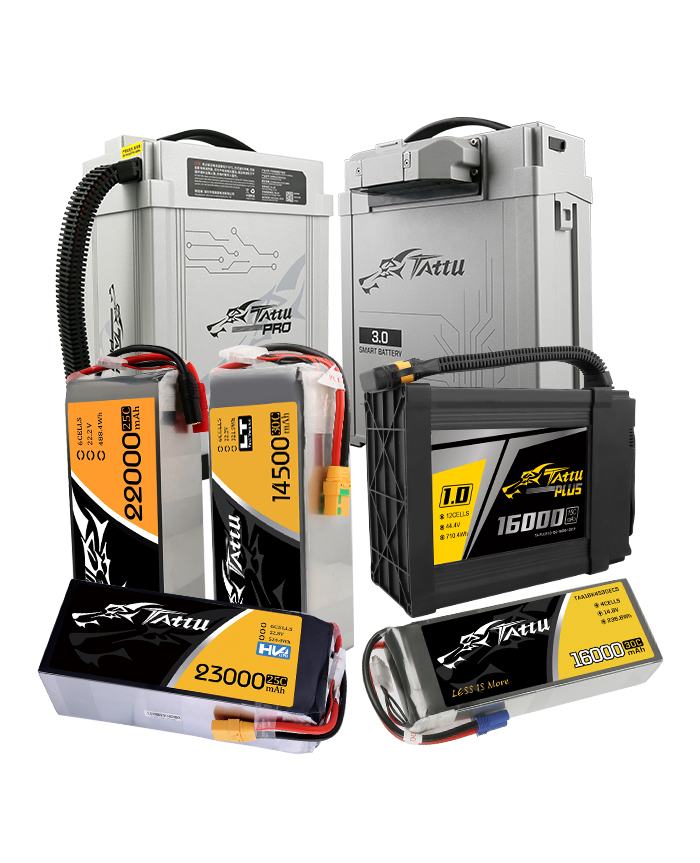
These are the recommendations from the Grepow Tattu team on the use of agricultural spraying drone batteries, we hope your flight mission goes well.
Article from Tattu EU Blog: How to use and maintain the agricultural spraying drone battery

